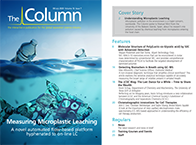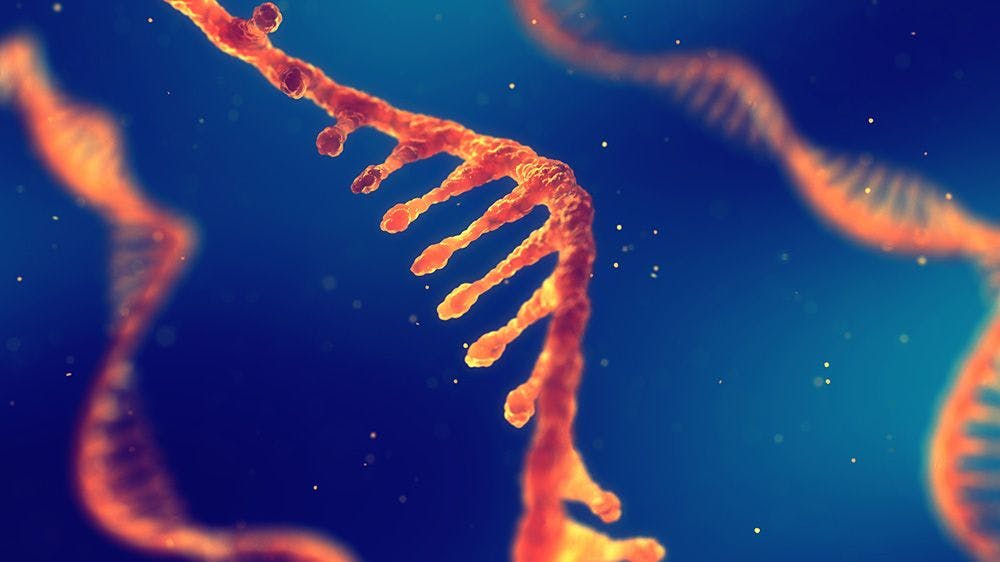2D–LC Characterizes Synthetic Oligonucleotides
A new methodology for the characterization of synthetic oligonucleotides has been developed by researchers from the University of Tübingen, Germany.
Photo Credit: stock.adobe.com.nobeastsofierce

A new methodology for the characterization of synthetic oligonucleotides has been developed by researchers from the University of Tübingen, Germany (1).
Synthetic oligonucleotides are a class of synthetic nucleic acids, which are generally 12–30 nucleotides in length. They have gained considerable popularity as a therapeutic tool and are a promising product for the regulation of gene expression. As they are to be used in humans and in clinical trials, their production must lead to high purity products. However, a number of issues can arise during their synthesis, such as deleted or extended base sequences or base modifications, and therefore the purification methods and assays for their quality control must be robust and thorough.
The dominant method currently uses ion-pair reversed-phase chromatography with triethylammonium acetate as an ion-pairing agent because oligonucleotides are poorly retained by common reverse-phase liquid chromatography (LC). However, as this method is hyphenated to mass spectrometry some drawbacks occur, such as ion-suppression in electrospray ionization. As such a methodology with sufficient selectivity and better compatibility for MS detection is desirable.
Towards this end, researchers developed a multiple heart-cutting (MHC) two-dimensional liquid chromatography (2D-LC) method with ultra-violet (UV) and electrospray ionization (ESI) mass spectrometry (MS) detection. The first dimension features a reversed-phase/weak anion-exchange (RP/WAX) stationary phase which provides the selectivity required to separate structurally similar oligonucleotide sequences. The second dimension reversed-phase column desalts via a diverter valve, and the active solvent modulation enables the oligonucleotide peak to be viewed without interference from non-volatile buffer components and ion-pair agents, which allows oligonucleotides to be detected in MS-compatible conditions.
Α α, Β β, Γ γ, Δ δ, Ε ε, Ζ ζ, Η η, Θ θ, Ι ι, Κ κ, Λ λ, Μ μ, Ν ν, Ξ ξ, Ο ο, Π π, Ρ ρ, Σ σ/ς, Τ τ, Υ υ, Φ φ, Χ χ, Ψ ψ, Ω ω
Reference
F. Li et al., J. Chroma. A. 1625, 461338 (2020).

Investigating 3D-Printable Stationary Phases in Liquid Chromatography
May 7th 20253D printing technology has potential in chromatography, but a major challenge is developing materials with both high porosity and robust mechanical properties. Recently, scientists compared the separation performances of eight different 3D printable stationary phases.
Detecting Hyper-Fast Chromatographic Peaks Using Ion Mobility Spectrometry
May 6th 2025Ion mobility spectrometers can detect trace compounds quickly, though they can face various issues with detecting certain peaks. University of Hannover scientists created a new system for resolving hyper-fast gas chromatography (GC) peaks.
University of Oklahoma and UC Davis Researchers Probe Lipidomic Profiles with RP-LC–HRMS/MS
May 6th 2025A joint study between the University of Oklahoma Health Sciences Center (Oklahoma City, Oklahoma) and the UC Davis West Coast Metabolomics Center (Davis, California) identified differentially regulated lipids in type 2 diabetes (T2D) and obesity through the application of reversed-phase liquid chromatography-accurate mass tandem mass spectrometry (RP-LC-accurate MS/MS).

.png&w=3840&q=75)

.png&w=3840&q=75)



.png&w=3840&q=75)



.png&w=3840&q=75)










